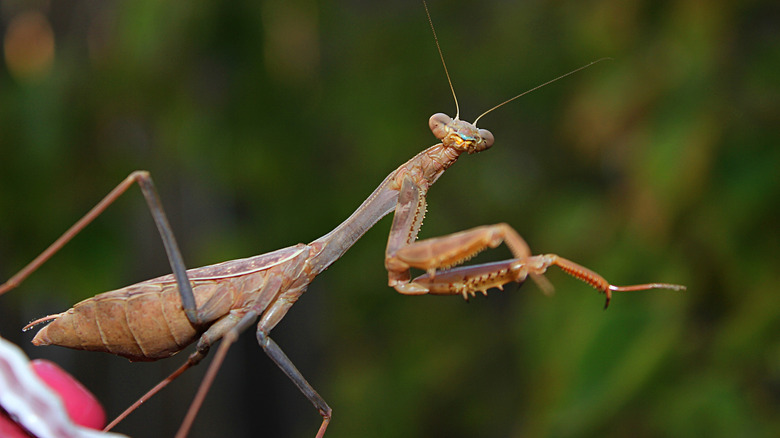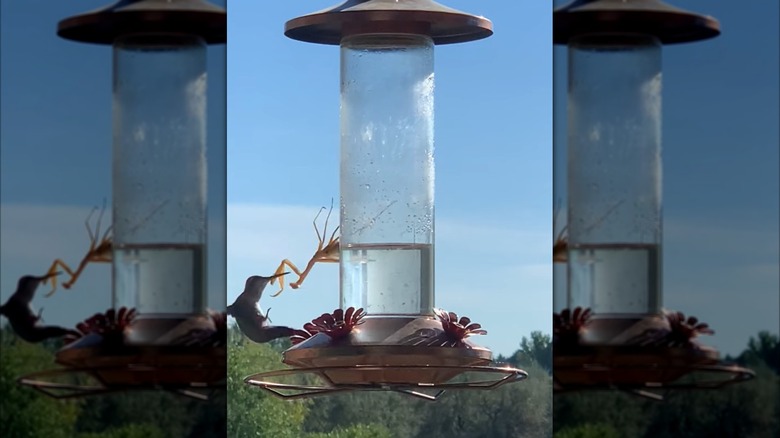Why Hummingbird Lovers Should Be Wary Of A Praying Mantis On Their Feeder
When it comes to the territorial little hummingbird, who isn't afraid to fight rivals from the feeder, we might think the little guy can look after himself. But if you see a praying mantis near that sugar water, watch out. These fierce hunter insects can target and even sometimes eat a hummingbird. While you might have been worried about guarding your hummingbird feeders from wasps, the praying mantis might be more dangerous.
How can an insect even manage to hunt and kill a bird? To start with, some mantises might be bigger than our bird friends, since they can reach lengths of up to 5 inches, while some hummingbird species only grow to be about 2 inches tall! Even smaller mantises have no fear, however, as most will go after prey as big or bigger than they are. They tend to sit on feeders, waiting for the other bugs attracted to the nectar, but if they're lucky enough to snag a hummingbird, they will.
These stealth hunters tend to stand very still and lie in wait, spikey forearms extended up in a pose reminiscent of praying, thus their name. When the predators strike, they quickly clamp down on prey with their spiky forearms with a force of more than 2 ¼ pounds, which means they can easily grasp prey that weighs more than they do. So, if you see a praying mantis hanging around the top of the hummingbird feeder, take action. It's better to be safe than sorry.
Steps to protect your hummingbird feeder from a praying mantis
The good news is that if a praying mantis did kill a hummingbird, it would probably require a fair amount of luck. This doesn't happen all that often. Hummingbirds most likely have more to fear from hawks, snakes, or even your pet cat than they do from the praying mantis. It's one reason you should consider the right height to hang your hummingbird feeder in the garden, out of reach of ground-dwelling predators. Still, if you're worried about a praying mantis hunting from your feeder, there are things to do to help protect it.
First, if you see a praying mantis on your feeder, move it. Then, it might be a good idea to put the feeder in a different place, away from dense shrubs or trees, since these stick-like bugs love to hide in or near thick foliage. Never use insecticide on your hummingbird feeder, as it can hurt hummingbirds as well as bugs. Don't forget, the praying mantis is beneficial to the garden because they feed on parasites that might be eating your flowers, so just thwart them rather than eliminate them.
If you're really concerned about keeping hummingbirds safe, remember that they might be at risk of falling ill from a dirty feeder or honey in your nectar. Fungal growth is a bigger danger than any predator bug when it comes to hummingbird feeders. Remember to keep hummingbirds safe by only using white sugar in your DIY nectar.

